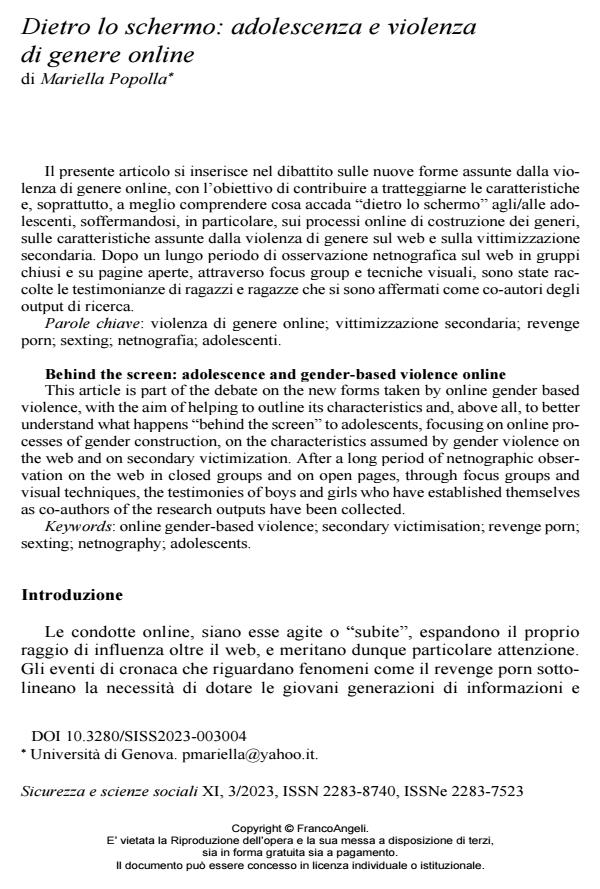Behind the screen: adolescence and gender-based violence online
Journal title SICUREZZA E SCIENZE SOCIALI
Author/s Mariella Popolla
Publishing Year 2024 Issue 2023/3
Language Italian Pages 19 P. 42-60 File size 212 KB
DOI 10.3280/SISS2023-003004
DOI is like a bar code for intellectual property: to have more infomation
click here
Below, you can see the article first page
If you want to buy this article in PDF format, you can do it, following the instructions to buy download credits

FrancoAngeli is member of Publishers International Linking Association, Inc (PILA), a not-for-profit association which run the CrossRef service enabling links to and from online scholarly content.
This article is part of the debate on the new forms taken by online gender based violence, with the aim of helping to outline its characteristics and, above all, to better understand what happens “behind the screen” to adolescents, focusing on online processes of gender construction, on the characteristics assumed by gender violence on the web and on secondary victimization. After a long period of netnographic observation on the web in closed groups and on open pages, through focus groups and visual techniques, the testimonies of boys and girls who have established themselves as co-authors of the research outputs have been collected.
Keywords: online gender-based violence; secondary victimisation; revenge porn; sexting; netnography; adolescents.
Mariella Popolla, Dietro lo schermo: adolescenza e violenza di genere online in "SICUREZZA E SCIENZE SOCIALI" 3/2023, pp 42-60, DOI: 10.3280/SISS2023-003004